Science, Technology, Engineering, Mathematics
(STEM) 

In our school we have been collaborating together within each key stage to understand how we can deliver more STEM activities within our school. In September 2019 our school became a finalist for the Rolls-Royce School Prize for Science and Technology. Since then we have been encouraging our students to develop important life skills through enrichment and engagement within our wider community in a practical, enjoyable and meaningful ways. We integrated STEM concepts within the Jewish Studies Curriculum through hands-on learning to create more opportunities for Cross Curricular teaching. With the help of our STEM team and all of the teachers and staff involved we have collaborated and engaged and motivated our pupils through their education. We have found that when Secular and Jewish Studies are sculptured together, it creates more opportunities for the students to explore STEM. We have also inspired our own innovative entrepreneurs into STEM through a Year 6 and Reception STEM club.
Please watch our Link to Stem montage video to understand what we have achieved. Please see below the activities we have incorporated and facilitated within our school...
24.10.22-Noach's Ark and Floating and Sinking
As the children's learnt all about Noach's Ark, we decided to add some STEM to our learning. We decided to engineer our own Arks from various different materials to discover what was waterproof and what wasn't. The children had some much fun making their Ark's and testing them in the water to see if they would float or sink. They made predictions around their findings. For the Ark's that floated we made predictions about how many objects it would take to sink their boats. One child's boat took 39 objects. Fantastic counting!

21.9.22 Rosh Hashana
Rosh Hashana is the Jewish New year. It is a time of family gatherings, special meals and sweet foods. We celebrate Rosh Hashana by eating round Challahs and apples dipped in honey. We listen to the sound of a Shofar being blown. The shofar is like an alarm that calls on us to wake us up and examine our ways so we can be ready for the new year. This month the Jewish Studies objective was to understand the purpose and importance of the Shofar. To incorporate STEM into EYFS and KS1, we booked in a Shofar Workshop to engage and inspire the pupils with hands on experiential learning. In the workshop, the children crafted their own Shofar and learnt how to separate the horn from the core. They helped the craftsman saw off the end, creating their own musical instrument. It was quite amazing to watch the children so engaged in their learning, and this workshop was a brilliant way to incorporate STEM into their religious studies education. It allowed them to learn how the instrument that is used for a religious purpose, is actually crafted for its purpose.


8.12.21 ROLLS ROYCE AND STEM AWARD

December 21-Chanukah
This month, the whole school has carried out Cross Curricular Days surrounding STEM and Chanukah. Each year group has learned about Chanukah and explored STEM concepts, surrounding the festival of light. The children were taught all about the Chanukah story and how it was a miracle that the oil burned for eight nights. At the end of every day (for eight days) all the children in school, and parents at home, used technology to take part in a half hour Zoom in which two year groups perform a song. Then, also over zoom, we lit the candles on the Menorah together. We have received positive feedback from this, with the parents being really appreciative that they are being involved and that we are all able to stay connected, despite the fact we are in a pandemic.
In Nursery we have been doing some fun activities surrounded around Chanukah. We did a Science experiment in which each child made a lava lamp using oil and we explored what happens when we mixed the oil with water and food colouring. The children made the following observations “the colour is mixing in the water,” “the oil is on top,” “I need to shake it, to mix it,” “we are Scientists,” [we’re doing an] “experiment,” “I made a lava lamp.” When I asked the children about when we use oil they said because it’s “Chanukah,” and in “the menorah.”
We also incorporated engineering into our lessons with the Nursery children. We split them into six teams and in each time they had a go at building their own Menorah from a variety of different resources. Mathematics was also incorporated as they needed to count and make sure they had eight candles and the Shamash (the main candle which lights the others), so they needed to count to nine. They also had to try and make sure all the candles were the same size and that Shamash was the longest, so there was lots of Mathematical vocabulary used. We also incorporated lots of Mathematics through baking, games and Chanukah songs. They had lots of fun!

In Year 1, we explored what materials would be best to make a candle from. The children were given various materials to discuss what material they thought would be best to make a candle out of. To further this learning Year 1 decided to have a candle making factory come into school so that the children could engineer their very own Chanukah candle out of wax and have this first-hand experience. We then decided to make some dreidels with the children. The children were given six different materials including tin foil and Lego to make dreidels out of and were asked to pick the best one based on the properties of the materials and how it fitted together. The lessons were great for introducing the children to the vocabulary around materials that they will hopefully remember when we re-visit the topic.

Year 2 have been having lots of fun learning all about the Great Fire of London through cross- curricular lessons and using Chanukah’s focus on flames continuing to burn for eight days. This linked in well and they were shown just how easily fire can spread across combustible materials. They built Tudor style houses from shoe boxes, which they covered in paper and decorated so that they looked like houses from 1666. Once outside (and from a very safe distance standing behind railings) an adult set the houses ablaze. Pupils were amazed by how fast the fire spread, how the ash remained hot once the fire had finished and how high the flames rose. They finished off with discussion and experiments about the best material a candle could be made from and of course talked about the importance of never playing with matches and fire safety.
Year 4 involved STEM concepts into their Chanukah learning, creating their own Menorah using recycled materials. They designed it, discussed pros and cons of candle vs electric and used simple circuits to make the light turn up. They also discussed why it was so important to recycle.


Year 5 engineered shadow puppets and used torches to re-create and act out the story of Chanukah. The recorded it and held shows for each year group.
This month, Year 3 and 6 have been learning about electricity and have planned to use the school Science equipment to make circuits to enhance their Menorah designs in preparation for Chanukah. Firstly, we did a lesson on how electricity works. Then, we looked at the symbols and asked the children to design different circuits on paper using the relevant symbols – some children did this using an app on the Ipads. This was differentiated across the two year groups. In this final week, we plan to let the children use the circuits to add the lights to their Menorahs.
As last year the STEM Menorah Competition was such a success, we decided to hold it again! This competition enabled the children to practise their STEM skills at home as well as in school with the involvement of their parents. We encouraged families to work together to design, test materials and build their Menorahs. We asked for designs to show measurements, with photographs to reflect material tests and reviews of their completed Menorahs. Due to the pandemic, we asked the parents to record and send us a short video of their family Menorah’s. Well done to the three winners.



Science Club
Week 6-16.12.21
This week the Year 6's experimented with different ways to make slime. They did some research and practised making the slime beforehand. They then instructed the children about what to do. There was lots of lovely vocabulary being used by both the Year 6 and Reception children such as "slimy, gloopy, sticky, stringy, runny." Which was so fantastic to hear. The children really enjoyed making the slime.

Week 5-9.12.21
This week the Year 6 pupils taught the Reception children the term "magnetic." They then showed them how to use magnets. Then they experimented with different materials and discovered what was magnetic and what wasn't. They had lots of fun!
Week 4-30.11.21

Week 3

Week 2-22.10.21

Week 1-15.10.21
.png)
October 2021- Noach's Ark
The bible stories that have been taught this month have discussed Noah’s Ark and are about a young woman named Rifka who gets water from a well for Avraham. In regards to this story, we have entwined STEM concepts through the topic ‘Materials,’ with the Nursery children. Our question to the children is ‘Which material would make the best bucket?’ As these children are only 3 years old, I have centred their lessons on materials through physical activities, exploring and discussing different materials which they think would be best to make a bucket from, which would hold the water that Rifka gave to the animals and Avraham. The children had lots of fun learning all about materials, they were taught lots of new scientific vocabulary and identified themselves as “Scientists,” and they remembered that we were doing an “experiment, to find out things.” Both Science and Maths were heavily focused on through these lessons. The children made predictions about which material they believed would make the best and worst bucket, they were able to explain their thoughts too. We recorded their predictions in a graph, the children put a photo of themselves on a graph and we counted how many children were on each side for the different materials, they also learnt the word ‘graph,’ and could use it for the numbers that they recognised and with support from myself. After recording on the graph a photo was taken, so that when we did the experiment the next day the children could see the photos taken on the whiteboard, via the use of technology to help them recall what we had discussed. The children had lots of fun during the actual experiment and found it really funny when I used a metal colander because all the water came rushing out. The children made these observations “It has holes!” “That’s not a good bucket.” “A bucket with holes isn’t a bucket!” “Metal with holes is no good!” “The water poured out.”

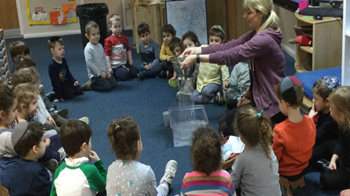
This month in Reception, the children constructed their own Noah's arks and we used them to experiment in floating and sinking activities. We built on this learning and we incorporated more STEM experiments, using water, the Torah talks about a well of water, so we encouraged the children with practical hands-on activities to explore filling and emptying bottles. We introduced new scientific vocabulary, such as full, empty, half full, nearly empty and nearly full. The children poured the water into bottles and containers to fill them to different levels and spoke about what they noticed. Some children were able to compare the capacity of different containers used to different utensils to see the quickest way they could fill up their bottles.
Lockdown
Since March and during Lockdown our school was committed to transferring our learning into the digital world, ensuring that all of our students stayed connected with their teachers and education. Each Key Stage used various online platforms that were age-appropriate for our students, to not only teach them, but to also support them and their parent’s emotional well-being. In line with support their emotional well-being we hosted a digital BJPS’ Got Talent, where 150 families filmed themselves doing various talents. These were then shown over a Zoom call to each other and a winner was chosen. All the children, parents and staff really enjoyed taking part in this talent show and it really helped to keep us all connected through this difficult time.
“On Monday 6th July we had a BJCFPS Talent Show! There were acts from Nursery to Year Six and the finalists went live! There was rapping, dancing, singing, gymnastics, jokes and so much more! There was even talking backwards by Akiva, a cover with a twist of “I Just Can’t Wait to Be King” by the Niman brothers and we were all incredibly impressed by the two unicyclists. We all had a great time and after all the talents we voted. Akiva in Year 5 came in first place with nineteen points and Rina in Year 2 came second with fourteen points for her amazing gymnastics. Thank you Teachers for hosting such a wonderful Talent Show!” Mrs Rose
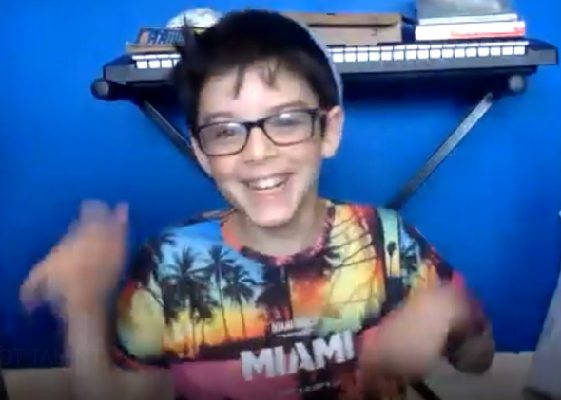
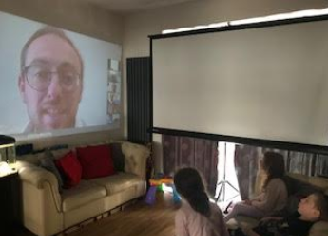
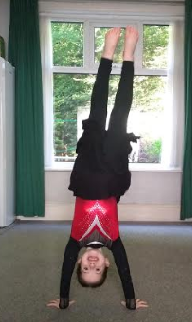
Congratulations to Akiva! He was the Winner of BJPS’ Got Talent.
Well done to everyone who joined in! We had 150 families participate. BJPS really does have talent…!
“I really enjoyed seeing all the different talents, such as singing, dancing and trampolining. They were all really good and well done to Akiva for winning by talking backwards.”
Mrs Borocin
“Thank you so much to everyone involved in organising the talent show. The kids and I had a great time watching it and it was such a well organised event.” Mrs Berg
In EYFS, we made pre-recorded videos and had Zoom calls to keep connected. In July, Year 6 and Reception were able to return to school. Although we were in separate bubbles, we still wanted to stay connected through our STEM Club. For this Reception had Zoom calls with the Year 6 students. The Year 6 students were very patient, when the Reception children had lots of questions about what we were doing. The Year 6 students would talk our Reception children through the various activities and their teacher would help them achieve this. The children especially enjoyed learning about electricity, making their very own circuit, especially when they saw the lightbulb light up.
We also did a Jewish studies gratitude project discussing the prayers that the pupils say before and after they eat, we linked this project to showing our gratitude to the NHS, we made a special video that we sent to the NHS that was made up of thank you messages with individual rainbows from our class. We received feedback from the NHS via twitter which I shared with my class, it was a really meaningful project and the children learnt that through technology we are able to send and receive messages and keep connected with each other. The link to the video is https://vimeo.com/417402127
KS1
During lockdown in KS1 we used a programme called Seesaw to communicate with children, alongside using Zoom to teach live lessons. Seasaw allowed us to record videos, send voice-notes and upload work sheets to the children. The children then had the opportunity to reply with their completed work using the same technology. A highlight for myself over the course of lockdown was teaching weight and measurement and then being able to watch videos of the children around their house practically weighing and measuring different household equipment. They really learned from this hands-on work and loved showing their teachers via video.
Both teachers and students thoroughly enjoyed this way of communicating and we have continued to use it into this school year. All homework is uploaded onto this programme and extra work is available for those children having to self- isolate. It has proved to be very efficient and has immersed the children into technology.
This school year we have carried on with continuous provision in our year 1 classrooms. By doing this we have been able to enhance our STEM teaching further. Year 1 investigated what materials would work best to create a water-proof sukkah to celebrate the festival of sukkot. Since we had done this with the previous cohort, we were aware of what changes needed to be made. We talked about the type of material the children thought they might need to build an effective one. Last year we used bamboo sticks which were a bit difficult to put together so this time we chose a plastic frame along with the children that was easier to build so that they could concentrate on the cover. In our Key Stage 1 meetings, we are already in the process of talking about how we can include more STEM concepts in a cross curricular way throughout our planning.
KS2
During the lockdown, Key Stage 2 accessed school work through Google Classroom. There were some ‘teething’ issues at first, due to lack of equipment, experience and time to organise/plan the lessons. However, it didn’t take long for the teachers and children to get to grips with the online setup, which allowed us to be more creative/ambitious as each week passed. Although the children missed seeing their friends, they loved filming and uploading videos and pictures of themselves doing the tasks set. The children particularly enjoyed our Zoom sessions, where we covered topics such as: PSHE, Science and other core subjects. We even hosted a movie viewing and a virtual end of Y6 leavers’ trip/assembly.
When the children returned to school in July they were very eager to continue with STEM club. We discussed how we will do this now that we are in separate bubbles. The children decided that we could do it electronically, and even one of the children commented “isn’t technology amazing! It keeps us all connected, even when we can’t be together. It’s so important!”
Tu B'shvat
For the festival of Tu B’shvat, the celebration of the trees, STEM concepts have been underpinned throughout to help the students understand the importance of trees, our environment and the earth that we live on. Throughout this festival the children learn about “Honi the Circle Maker,” who saw an old man planting a tree, knowing that the old man would not receive any of the fruit in his lifetime, Honi wondered why he would do this. The old man spoke of how his ancestors had planted trees for him so he must also continue this for the next generations. In light of this story, the children have been learning how important trees are and how they can also give back to the environment to help not only themselves but also help future generations.
As it is a customary to plant new trees, each year group planted a new tree. After a nature walk, the students in EYFS and Year 1 compared and discussed how the trees in our environment look different now, compared to how they will look in the Summer months to come. We took pictures of the sapling and plan to go out each month and take more pictures, documenting and comparing the changes.
We planted a fruit tree and learnt about growth; about the lifecycle of a tree. The children were taught about how water travels around the sapling (water transportation). We learnt the different needs of plants; what conditions plants need to grow; water, light, temperature, soil, nutrients and space. We took pictures of the tree and we are going to monitor its progress every few weeks. We also cut open unusual fruits such as a dragon fruit and star fruit, so the children got to explore their 5 senses. We discussed that fruits accumulate water and nutrients from the tree, and they use these nutrients to create their flesh and seeds. We closely investigated the health of the fruit, changes in colours and looked at the most common ways by which we judge whether a fruit is ripe or not, including external features, such as softness to the touch, and internal features, such as sweetness, the children really enjoyed the fruit tasting!
In Reception we also made a comparison of which fruit grows on the tree and which does not to interlink with the prayers we say for fruit grown on a tree and the prayer for vegetables grown in the ground. We also discussed why it is important that fruits have skin. We decided to conduct an experiment with apples to explore decay and how decay can change if exposed to different environments when the skin was not protecting the apple. The apple was chopped up and put in four cups, one with the air, one with oil, one with water and one with lemon juice and the children made predictions about what they thought might happen. This was observed over four days. We then discussed why the apple decayed and this led onto the discussion about the importance of not wasting our fruit and eating them before they decay.
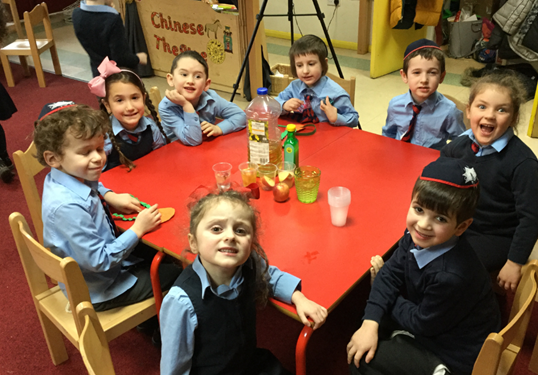
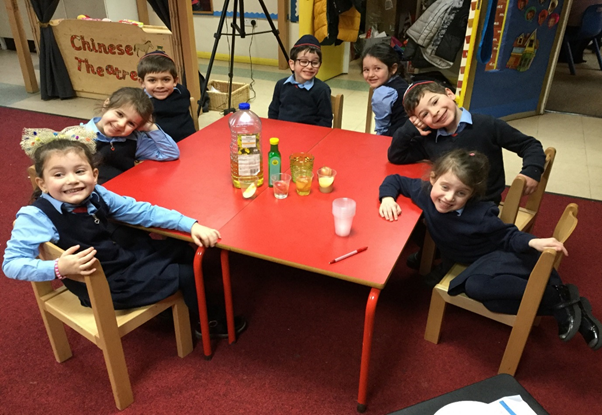
Year 3 wanted to find out whether fruits could be used for any other purpose than eating, so the children conducted an experiment to find out which fruits contained enough acidity to run a digital clock. They discovered that fruits such as lemons, limes and grapefruits made excellent batteries while bananas, apples and pears only worked for a short time.

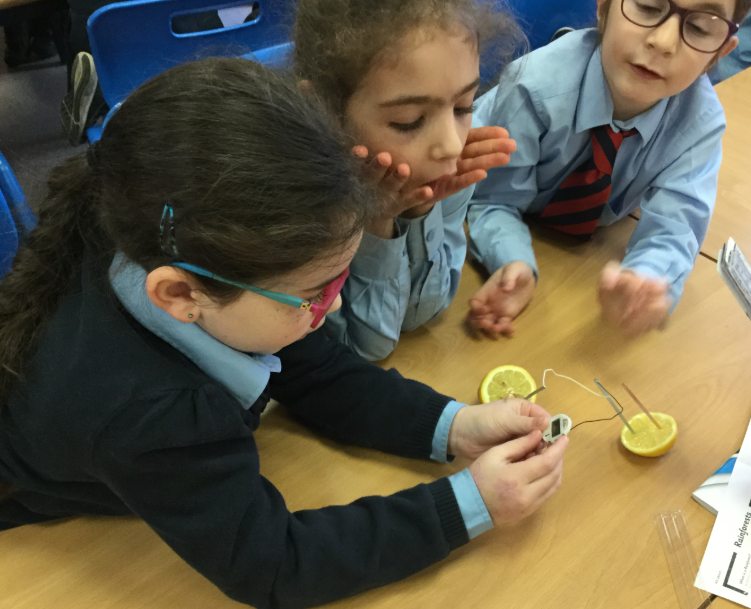
For this festival Year 5 have studied David Attenborough and his contribution to environmental awareness and their Jewish connections. They also found out about Greta Thunberg and Jane Goodall. Each of them then wrote a report on these environmentalists and the changes they themselves could make in school and at home. They have already started to put their plans into action such as picking up and reducing their plastic usage, trying not to waste water or electricity, walking or cycling rather than using a car. Some have been to their local parks to collect litter and they are trying to educate their family and friends on the importance of recycling.
In Year 6, the children were working with different fruits grown on a tree to explore fractions and mean averages using the segments. It was a good opportunity for the children to really understand fractions through hands on learning and by the end of lesson the children had a wider understanding of fractions and averages.
In Science club it great to see the children’s planning, organisational and preparing skills develop and flourish. The Reception children are very excited for Science club each week they are very eager to participate and learn from the Year 6’s.
After being taught about the environment and how detrimental plastic and waste is. The Year 6's have come up with the solution to use non-recyclable plastics and materials in a sufficient, self sustainable way, to make eco-bricks from plastic bottles filled with non-recyclable materials to make a planter, so that we can plant vegetables. The Year 6's have now made their swan planter from non-recyclable plastic bottles so that they do not end up on a landfill. They are planning to plant different vegetables that can be eaten by the children in school or donated to food banks.
Chanukah
Chanukah is the Jewish eight-day “festival of lights,” celebrated with a nightly menorah lighting and foods fried in oil. During the festival of Chanukah every night the Menorah is used. We light a candle on the Menorah for 8 nights of Chanuka, this is for us to remember the story about the Menorah that was lit in the Temple. We learnt about the miracle that occured and that although there was only enough oil to burn for one night it burnt for 8!
For Key Stage 1 and EYFS we decided we wanted them to understand the Science behind how oil is made, so we had an Oil Press Workshop.
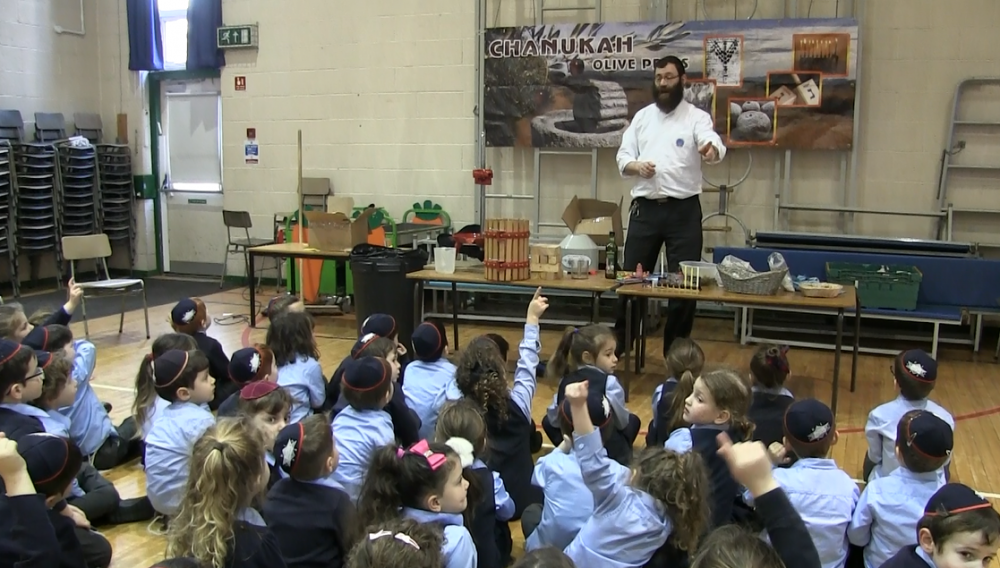
Each year group has learned about Chanukah and explored STEM concepts, surrounding the festival of light. In Reception we investigated what happens to oil when we combine it with water and food colouring. The children made predictions and began to come up with their own scientific knowledge to describe what they thought might happen.
“We are Scientists! I think the oil will mix with the water. Oh no, the water went down and the oil went up.”
“It will rise.”
“I predict, they will both change colour.”
“I think they’ll separate."


In consideration of the children understading the importance and purpose of the Menorah that we light every night during the festival of Chanukah, we created a STEM Menorah Competition, to enable the children to practise their STEM skills at home as well as in school with the involvement of their parents. We encouraged families to work together to design, test materials and build their Menorahs. We asked for designs to show measurements, with photographs to reflect material tests and reviews of their completed Menorahs. The Menorah Competition has triggered a positive atmosphere and excitement throughout the school with both parents and children discussing what they have been working on.
We had over 40 family entries into our STEM competition. The children were given first, second and third prizes judged upon Menorah’s Design, Finished Product and the Evaluation process. This meant we had 9 winners, however because it was very difficult to decide, we ended up giving a further 7 Creative STEM Ambassadors of the Future certificates.
Here are our 7 Creative STEM Ambassadors of the Future.
Asher, Avi, Eliyah, Meir, Shifra, Shaya and BenTzion
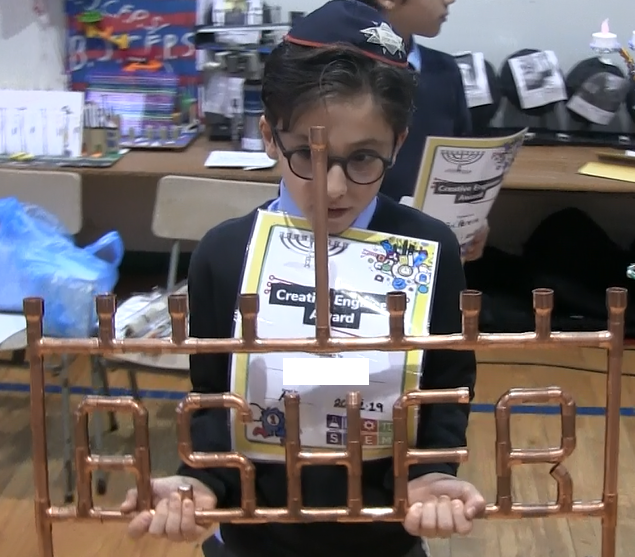
.png)
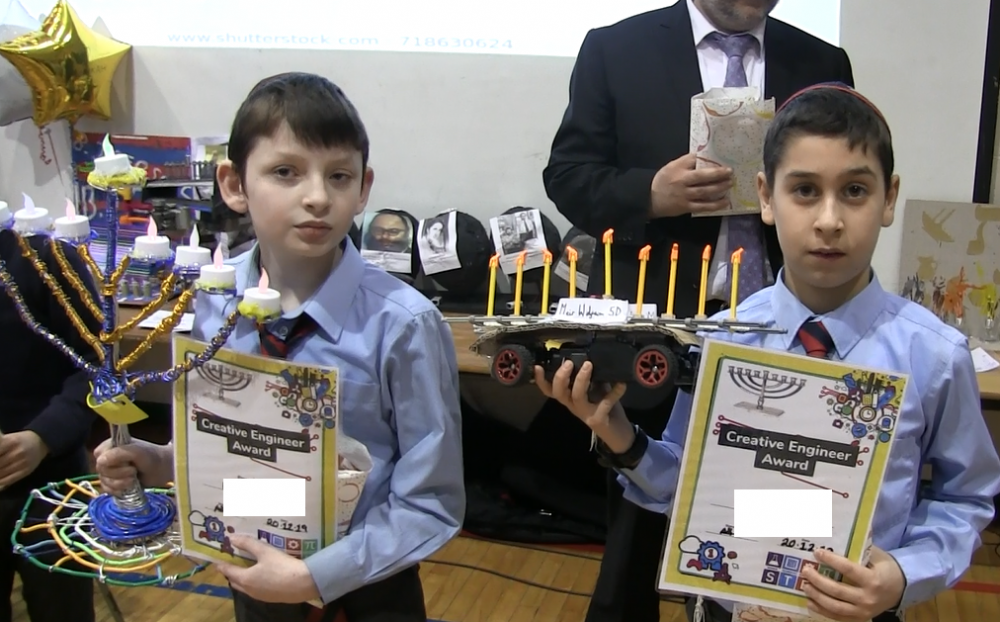
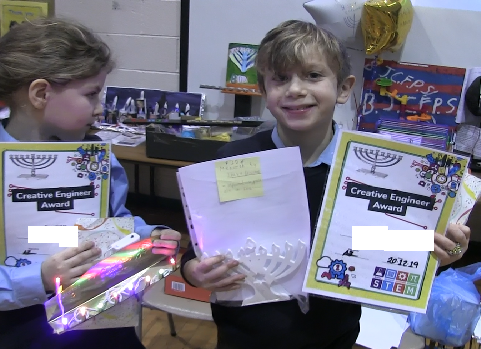
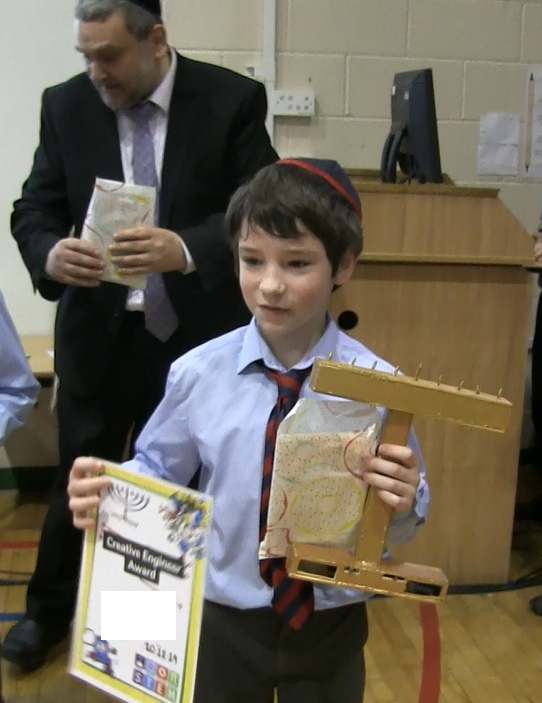
Winnes for Planning and Design Process.
First place goes to Yoni, Zehava, Tzvia and Dina Second Place was Ayalla
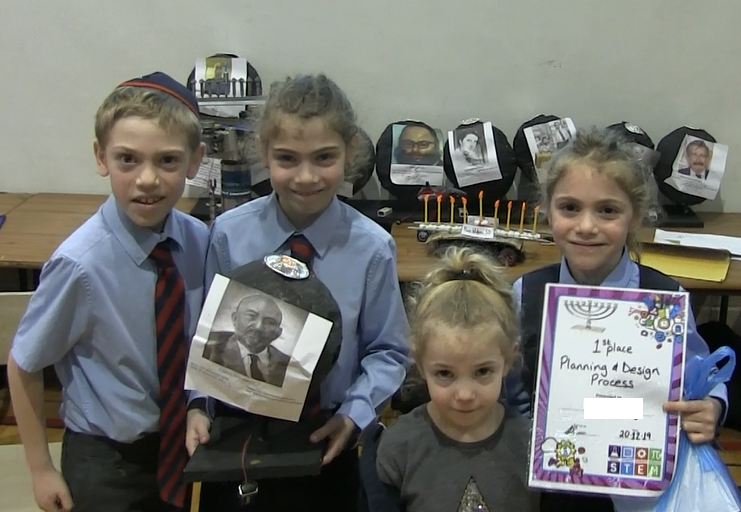

Third place was Yisroel
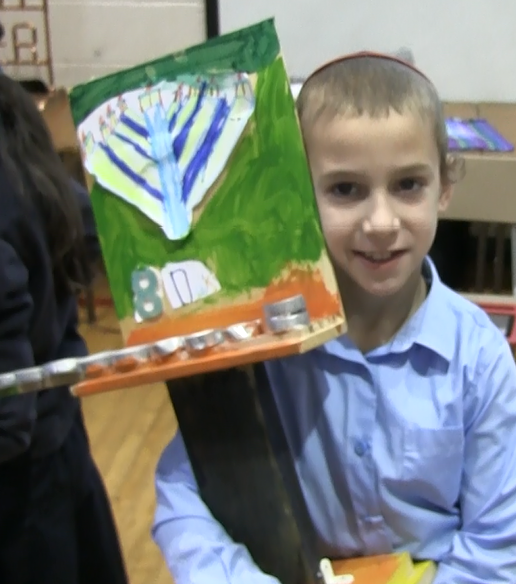
Winners for Finished Product:
First place was Tamara and Leora Second Place was Benjamin and Rachel
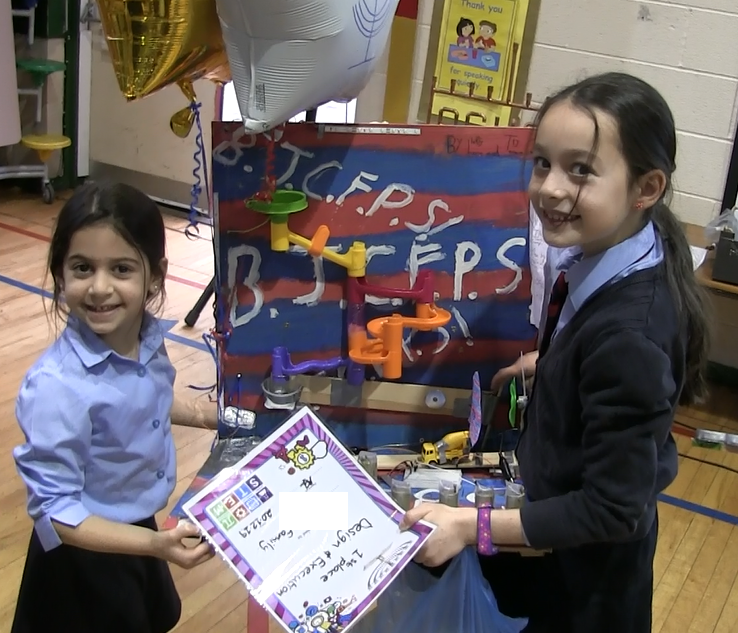
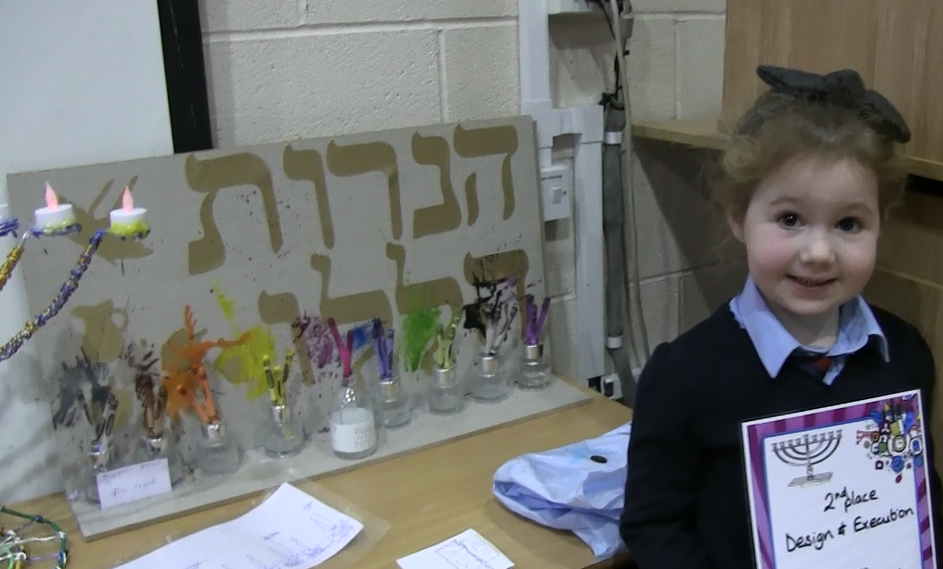
Third place was Ariella, Gadi and Yoni
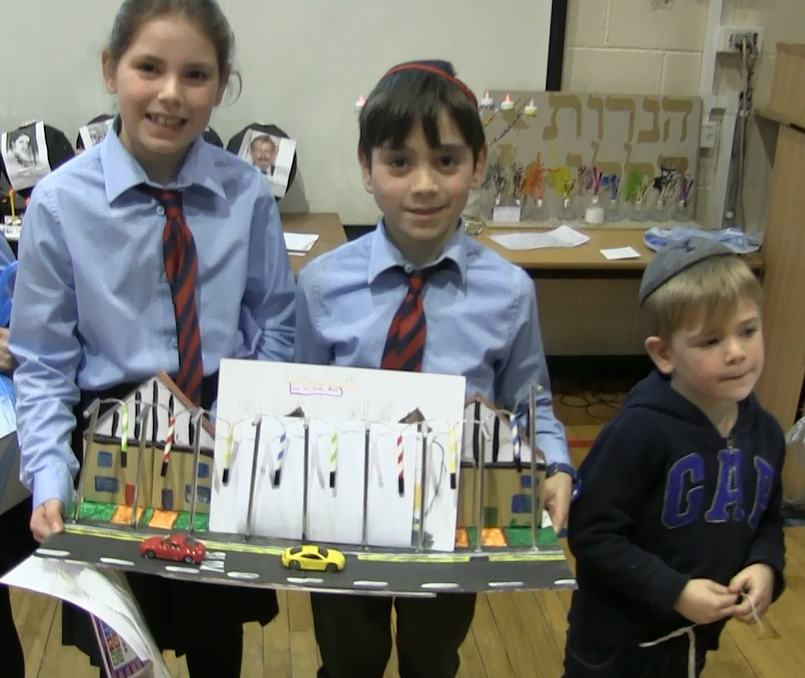
Winners for final product and evaluation process.
First place was Amalya and Gavi Second Place was Rafi and Jacob


Third place was Rafael
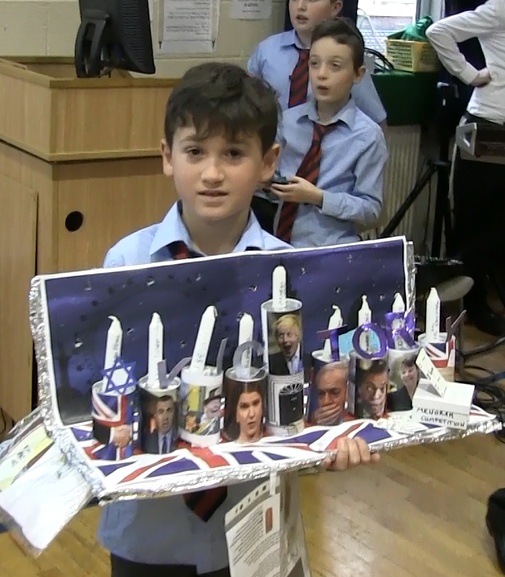
Here is some of the comments we have received from parents, after the competition had taken place:
“We really enjoyed completing the project as a family and hopefully that is evident from the happy photos! I think the boys gained lots of skills from completing a scientific report. “
“Bringing STEM into the competition really created a sense of achievement for both of them. With every stage it allowed for great thinking and discussion in what we were actually building on at that time and because we were now aware of STEM which we hadn't heard of before. We kept noticing how our design was consistently using science, tech, engineering and maths.”
Whole School STEM Day 28.11.19
Each year group participated and you can see from the pictures what a fun day the children had, as well as a great learning experience—for Staff as well!
Reception made our clay menorahs, we had to work really hard to mould and engineer the menorahs to make the right shape and then we had to carefully count out the right number of holes for our candles.



On Chanuka we play a traditional game of dreidel (spinning tops). The common reason given for playing the game of dreidel on Chanukah is that the simple little spinning top was used by the Jewish children who were hiding in caves. When they would see a Greek patrol approaching, they would quickly hide their Torah scrolls and take out the spinning top dreidel, pretending to have simply been playing a game.
Year 1 used their STEM time to try to find out the best material to make a dreidel from. They had to choose between Lego, Kinex, tin foil and card…….


Year 2'shistory topic is the Great fire of London. We had a super time making Tudor style houses and then burning them outside to create our own 'Great fire of London.' A sizzling time was had by all with fire extinguishers at the ready! The children had plenty to talk about when they went home that day and have been writing a fantastic newspaper report all about it.

In Year 3, the children learned about how we see light, how shadows are formed and what they are. We then experimented with different materials and distances of light to see how it affected the strength and size of the shadow. The children learned about the Chanukah story and made shadow puppets to perform the play.

.jpg)
Year 4 have conducted their very own electric circuits in order to create a Chanukah Menorah. They worked really hard all day, using their knowledge in Electricity and the designs of a Menorah and have produced beautiful works of art (and science).



As all Jewish children know, the miracle of Channukah was that the holy oil that burned in the Temple Menorah lasted for 8 days before it was consumed (instead of just 1) but how does oil behave in the natural world, when Hashem is not performing a miracle? Year 5 have been finding out about this amazing, everyday substance to support their Materials and their Properties Science work and have learned how to mix and separate it. We also used our understanding of oil’s density to create some marvellous marbling as a background for our Channukah artwork.
Year 5 As all Jewish children know, the miracle of Chanukah was that the holy oil that burned in the Temple Menorah lasted for 8 days before it was consumed (instead of just 1) but how does oil behave in the natural world, when Hashem is not performing a miracle? Year 5 have been finding out about this amazing, everyday substance to support their Materials and their Properties Science work and have learned how to mix and separate it. We also used our understanding of oil’s density to create some marvellous marbling as a background for our Chanukah artwork.



Year 6, investigated at the connection between Chanukah and electricity. They plan to look at the lives and achievements of famous scientists to help us develop a passion in STEM subjects and consider pursuing a job in a STEM field.


Animate Me-Year 6, 26.11.19
Year 6 put their Mishna learning into practice by creating Animate Me motion pictures of several cases in the Mishna. The children are learning about the Torah law relating to damages and these really helped the children to understand what they were learning in a practical way.
.png)

.png)
.png)
Noach's Teivah 30.11.19
EYFS and KS1 incorporated STEM concepts into our learning of the Sedra of Noach and his Teivah. We introduced new scientific language to the children, surrounding floating and sinking. We then made predictions and investigated what different materials might sink and float. We also spent time designing and engineering our own little Arks based on our findings and discussed what materials would be appropriate. We made our Arks from paper, card, foil and wood and then tested what happened to each material when tested in the water and discussed which was best. They really enjoyed watching their Arks float in the paddling pool and were truly engaged in this activity particularly, when they tested what would happen when they added marbles. They then investigated and counted how many marbles it would take to sink their boats! We also engineered our own giant Ark made from cardboard, cardboard boxes and wooden blocks. The Ark was made to have 3 floors, just like the Ark in the Sedra for the rubbish, the animals and the people.







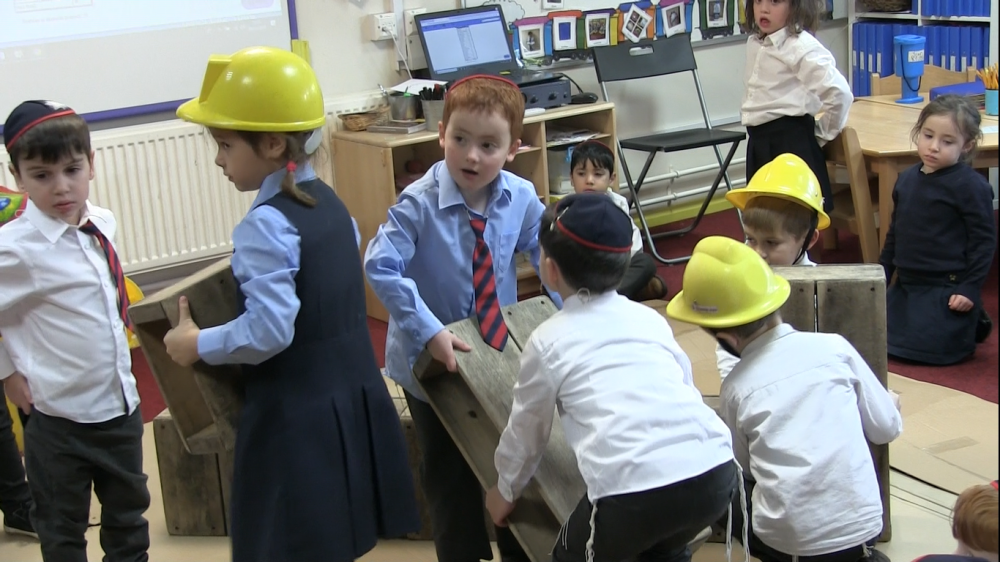



Science Club
Over the last couple of weeks, the Year 6 children have been planning and recording their own video applications for our Science club. The volunteers planned a short script over the weekend about what they would be able to bring to the STEM group and why they want to apply. Using the school Ipads, they recorded their applications during the afternoon sessions. The children have planned the upcoming STEM sessions and are well equipped to teach, model and scaffold STEM concepts to the Reception children.






Sukkot 10.10.19
Sukkos commemorates the years that the Jews spent in the desert, and celebrates the way in which Hashem protected them under difficult desert conditions.Over the past month the children in Nursery have been busy learning all about Succos. We have talked about our traditions and how we celebrate them in school and at home. To celebrate the holiday of Sukkos Jewish people build a temporary place to live for the 8 day festival. We explored different ways of engineering and decorating our Sukkahs. We used different tools, equipment, textures as well as food and building blocks to build our structures. The children took time to plan their ideas and they worked well in groups and also have the opportunity to cut and add greenery to their Sukkah.



After learning all about this festival and why we live in our Sukkah on Sukkos, Year 1 were given the opportunity to engineer their own Sukkah. They discussed the type of materials they think they might need and what they will use to construct and to build an effective one. They used their mathematical skills to help measure out the materials and suggested that all the bamboo sticks must be the same size. The children then worked together to build their own Sukkah, they were given: bamboo sticks, cello tape, string, fabric, bull dog clips, staplers and cable ties. It was really great to see the children work together to engineer their Sukkah.








Year 4 have been using the Chromebooks to engineer and build their own Sukkah using computer software called ‘Tinkercad’. The children could explain and show how to engineer a Sukkah using this software.




Rosh Hashana 26.9.19
Rosh Hashana is the Jewish New year. It is a time of family gatherings, special meals and sweet foods. Jewish people celebrate Rosh Hashana by eating bread and apples dipped in honey. We listen to the sound of a Shofar (rams horn) being blown. The shofar is like an alarm that calls on us to wake us up and examine our ways so we can be ready for the new year. This month the Jewish Studies objective was to understand the purpose and importance of the Shofar. To incorporate STEM into EYFS and KS1, we booked in a Shofar Workshop to engage and inspire the pupils with hands on experiential learning. In the workshop, the children crafted their own Shofar and learnt how to separate the horn from the core. They helped the craftsman saw off the end, creating their own musical instrument. It was quite amazing to watch the children so engaged in their learning, and this workshop was a brilliant way to incorporate STEM into their religious studies education. It allowed them to learn how the instrument that is used for a religious purpose, is actually crafted for its purpose.





On Rosh Hashana we dip apples and bread into honey, it is symbolic of the ultra-sweet year we hope we will be granted. The children carried out an experiment, they were given two unknown substances (honey and oil). They then discussed what they might be, through exploring the texture of the honey and oil through touch, smell and consistency. The children then took turns to be blindfolded to identify and investigate the two substances.

For Rosh Hashana, Reception learnt about bees, how honey is made and we explored shape and engineered a hexagonal hive together. We also brought in technology by using our bee bots. Before we could use the bee bots, we had to teach the children how to code, they learnt this through playing a coding game in which the children had to follow the arrows/codes in order to move. This helped them when we then used our bee bots.



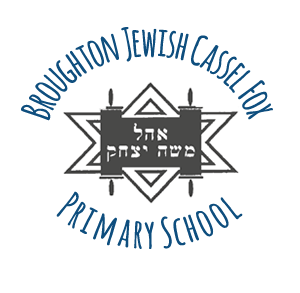



















.png)













.png)
















.jpg)






.png)

.png)
.png)







































